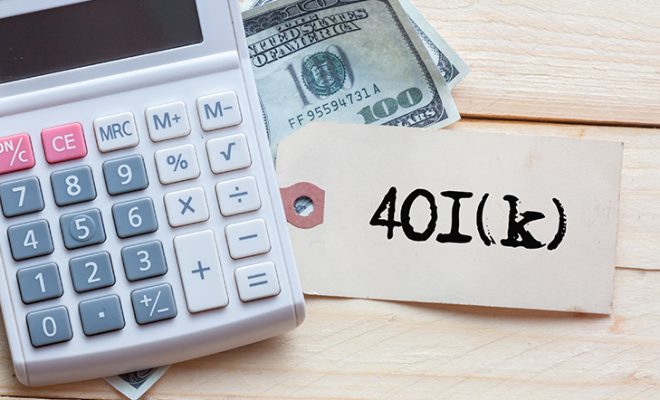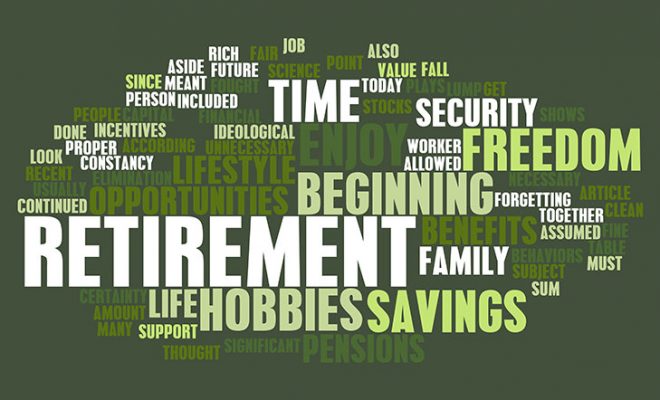Why A Market Downturn Could Be The Best Time To Contribute To A Retirement Plan

A market downturn, also known as a market decline or market correction, occurs when the prices of securities, such as stocks or bonds, decrease significantly over a relatively short period. Factors such as economic downturns, political instability, or industry or company-related events can cause market downturns. These downturns can considerably impact your long-term goals, like retirement. According to Fidelity Investments, the average 401(k) balance dropped by 23% in 2022 to $103,900, while the Individual Retirement Account (IRA) average balance went down by 20% to $104,000. Despite improving inflation rates, a lot of financial experts predict the U.S. will enter a recession in 2023. This can be a worrying time for retirees and those nearing retirement, as the value of their investments can be compromised. However, there are a number of strategies that can help investors protect their long-term financial security at this time.
A financial advisor can help you understand the best investments to make in a down market and how to protect your retirement savings in a recession. This article discusses retirement planning strategies that can help you safeguard your retirement savings during a market downturn.
Understanding market conditions that can impact your retirement savings
In order to understand how a market downturn affects your finances, you must first understand different market conditions and how they are caused.
1. How a bull market can impact your retirement savings
A bull market is a period of sustained rising prices in the stock market. This phase is usually characterized by investor optimism, strong economic growth, and low unemployment. While a bull market can provide a boost to your retirement savings, it can also lead to overconfidence and risky investing behavior, which can result in losses when the market eventually corrects/ falls.
2. How a bear market can impact your retirement savings
A bear market is the opposite of a bull market. It is characterized by a period of falling stock prices and a generally pessimistic outlook on the economy. During a bear market, retirement savings can be negatively impacted as the value of investments decreases, and investors may sell their assets at a loss. A bear market may see a lot of panic and decisions made on the basis of fear.
3. How a recession can impact your retirement savings
A recession is a widespread, consistent economic decline that can have a negative impact on investment returns and retirement savings. During a recession, unemployment rates increase, consumer spending decreases, and companies may experience losses. A recession usually results in reduced stock prices that can cause potential losses for investors.
How do market downturns impact your retirement savings?
A market downturn can negatively impact your retirement savings, such as 401ks and IRAs, in the following ways:
1. It can lead to falling investment values
A market downturn can lead to a decrease in the value of stocks, bonds, and other investments you may invest in through your retirement accounts. When the value of your assets falls, your future retirement income can be impacted as you get to save less than you aimed for.
2. It may lead to lower contribution amounts
A market downturn can create a sense of panic in the economy, leading to losses, low stock prices, unemployment, and more. When this happens, you may be more hesitant to contribute to your retirement accounts. The fear of losing your money is high and disposable income is low. As a result, you may contribute less, which can impact the growth potential of the retirement account.
3. It might result in a delayed retirement
If a market downturn significantly impacts your retirement savings, you may be forced to postpone your retirement. This can have repercussions on your health, future plans, lifestyle, and more.
What should retirees do in a recession or during a bear market?
Things can seem challenging when the market does not work in your favor. But there are a number of things that can help. In fact, a down market can be favorable to your retirement savings if you follow these tips:
1. Buy low and sell high to make higher profits
During a market crash, many stocks witness significant declines in their prices. While these falling prices can be unsettling for most investors, they can also create buying opportunities for those who are willing to take a long-term view. A stock market crash can create earning opportunities if you are able to identify undervalued stocks and purchase them at a low price. When the market eventually rises, you can sell your stocks at a higher price and book a profit. But it is essential for investors to conduct thorough research and analysis before making any investment decisions. Buying undervalued stocks during a market crash is no exception.
2. Stay invested in a diversified portfolio to lower risk
Diversification is essential for risk management, irrespective of market conditions. However, the strategy can be all the more useful during a bear market or recession. Diversification can help reduce the negative impact of market downturns on your retirement savings. Diversifying your investments across multiple asset classes, such as stocks, real estate, bonds, gold, cash, etc., helps you minimize your exposure to any single asset or sector. Make sure to diversify your 401k and IRA portfolios according to your financial goals and risk appetite.
3. Rebalance your investment portfolio regularly to stay aligned with your goals
Portfolio rebalancing refers to adjusting the asset allocation of your investment portfolio to maintain the desired level of risk and return. Regularly rebalancing is recommended by most financial advisors to ensure you have the right balance of risk and return that aligns with your age and goals. Market downturns impact different investments differently. Some of your investments may perform poorly than others, and your portfolio can become more heavily weighted in a particular asset class or sector. Rebalancing can help prevent this and reduce the risk of overexposure to a single asset class.
4. Use the dollar cost averaging technique to balance out your losses and gains over time
Dollar-cost averaging refers to a technique of investing where you invest a certain amount of money into an investment instrument at regular intervals. This removes the need to time the market or make investment decisions based on short-term price fluctuations. Instead, you develop a disciplined approach to investing and consistently invest a fixed amount of money at regular intervals for a long period. Dollar-cost averaging helps you purchase more shares when prices are low and fewer shares when prices are high. This can help smooth out the impact of market volatility on your portfolio over time. It also allows you to take advantage of the power of compounding, which can potentially grow your investments over the long term. Compounding refers to reinvesting your dividends or interest payments to increase the value of your assets over the long run.
5. Avoid making emotional investment decisions that you may regret later
Market downturns can be a trying time. It may cause you to make emotional investment decisions, such as panic selling, mimicking your peers, or trying to time the market. It is important to note that, in most cases, these decisions may lead to poor investment outcomes that ultimately negatively impact your future retirement savings. It is essential to control the urge to act in haste and maintain a long-term investment perspective even when things seem unfavorable. Avoid making investment decisions based on short-term market movements. Instead, try to focus on your long-term financial goals and stick to your investment plan.
6. Create stop-loss orders to avoid further losses
A stop-loss order is an order to sell a stock or other investment if the price drops below a certain amount, also known as the “stop price.” When a market downturn occurs, prices can fall rapidly, and stop-loss orders can help you to protect your portfolio from further losses. By setting a stop-loss order at a price level below the current market price, you can limit your potential losses by automatically selling the asset if its price falls to the predetermined stop price. For example, if a stock is currently priced at $40 per share, you can set a stop-loss order at $35. When the stock price falls to $35 or below, the stop-loss order will trigger a sell order, and the shares will be sold for $35 or the market price of the concerned stock at the time.
It is essential to understand that a stop-loss order is not the same as panic selling. These orders are set based on market analysis after careful evaluation and consideration. They may require some prior stock investing experience. You can also reach out to a financial advisor to understand how they work.
SPONSORED WISERADVISOR
Where to invest in a down market
Here are some investment options you can consider to ensure your retirement savings continue to grow irrespective of the market condition:
1. Gold and other precious metals
Gold may protect your portfolio against market volatility. Gold prices may increase when the market is down. Post the great recession of 2008, gold prices soared by more than 100% between 2008 and 2011. Gold is also a hedge against inflation and can protect your portfolio when inflation is high. Its value grows with inflation, ensuring your returns are able to keep up with the rising prices. Additionally, gold can also help to diversify your portfolio.
You can also consider other precious metals like silver and platinum, too. But you should keep in mind that investing in these options physically can present issues of storage. They can be stolen, and you may have to spend money on a locker to keep them safe. Precious metal mutual funds and Exchange-Traded Funds (ETFs) can be a way out. These mutual funds and ETFs invest in platinum, gold, or silver bullion. They offer liquidity with the convenience of quick investments and redemptions and no hassles of storage.
2. Real Estate Investment Trusts (REITs)
REITs are a type of trust that own and operate income-generating real estate properties, like malls, commercial complexes, offices, hotels, parking lots, etc. They present an alternative to investing in real estate directly, allowing you to buy and sell their shares on the stock exchanges. When you invest in REITs, you get to benefit from the growth of the underlying properties in the trust, but at the same time, you do not have to purchase and manage the property yourself. Since real estate is not directly correlated to the stock market, investing in REITs can be a good idea during a market downturn. However, it is essential to note that real estate is not entirely immune to the stock market’s ups and downs. The two are correlated to some extent. Therefore, it is advised to evaluate the option thoroughly before making a decision.
3. Dividend-paying stocks
Dividends paying stocks can be one of the best investments in a down market as they offer regular dividends even when the stock prices are falling. This ensures that you earn a steady return at a time when the stock price may not appreciate much. Dividend stocks can be particularly suitable for risk-averse investors. But it is worth noting that companies are not mandated to pay dividends, and there could be times when the company eliminates or reduces the value of the dividend. As with all stocks, you must research well, understand the company’s core principles, follow corporate decisions, and be well-acquainted with the industry before selecting dividend stocks.
4. Bonds
Bonds are typically considered less risky than stocks, and they can help diversify a portfolio by providing a source of income and potentially reducing overall portfolio volatility. They can be suitable in a market downturn and can help you earn steady yields. There are different types of bonds to choose from, such as U.S. Treasury bonds that are backed by the government and, therefore, ideal for conservative investors. You can also consider Treasury Inflation Protected Securities (TIPS) that, as the name suggests, provide inflation-protected growth. These may be ideal when the economy is undergoing a high inflationary period. If you are considering adding a bit more risk, you can invest in corporate bonds. Corporate bond funds are similar to government bonds. However, instead of the government, they are offered by corporate companies. As a result, they may contain relatively more risk.
5. Stocks from essential sectors
No matter the state of the economy, some products and services always continue to be in demand. These can include healthcare, food, and other utilities. The constant demand for these products helps these companies to stay in business, earn profits, and forward the same to their shareholders, making them one of the best investments in a down market. You can invest in the stocks of such companies during a market downturn to add some immunity against short-term volatility to your portfolio. You can invest in stocks directly or consider mutual funds and ETFs that invest in these sectors.
To conclude
It is important to remember that market downturns are a part of the economic cycle and are likely to occur now and then. Maintaining a long-term investment perspective is essential to ensure you are not affected by these short-term fluctuations. Staying invested in a diversified portfolio, regularly rebalancing, following dollar cost-averaging techniques, creating stop-loss orders when necessary, and avoiding making emotional investment decisions can help mitigate the negative impact of market downturns on your retirement savings to some extent. Working with a financial advisor can help you create a retirement plan that accounts for market volatility and mitigates risk.
Use the free advisor match service to find a financial advisor in your area to understand where to invest in a down market. Answer a few simple questions based on your financial needs, and the match tool will help connect you with 1-3 financial advisors that are best suited to help you reach your financial goals and requirements.











